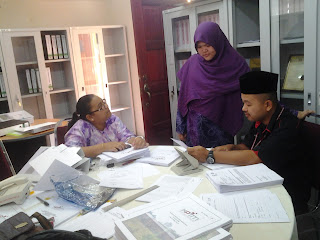DATA ANALYSIS is actually much 'simpler' to do in a sense that we just need to compile, analyse and display it in the form of graphs / pie charts etc. Full stop ! It doesn't tell you what is good or bad about the data or graph that has been projected .. it doesn't explains or highlights what else need to be done or eliminated for continual improvements etc .. in short, it is simply a graph or pie chart without any meaningful or constructive messages !
But for GAP ANALYSIS we are expected to do much more than that .. in addition to what we do for Data Analysis, Gap analysis requires us to assess the 'SPACE' between where we are (what is currently being done) and where we want to be (what is required by law/ organization) .. simply put, it highlights which of the variables or requirements that are being met and which are not ..
Gap analysis should tell us which practices (amalan), services or functions have been left out or should be eliminated (accidentally or deliberately) and which one is still needed to be developed or enhanced .. it tells us if there is any 'gap' that we need to improve on .. so that 'where we want to be' can be achieved !


